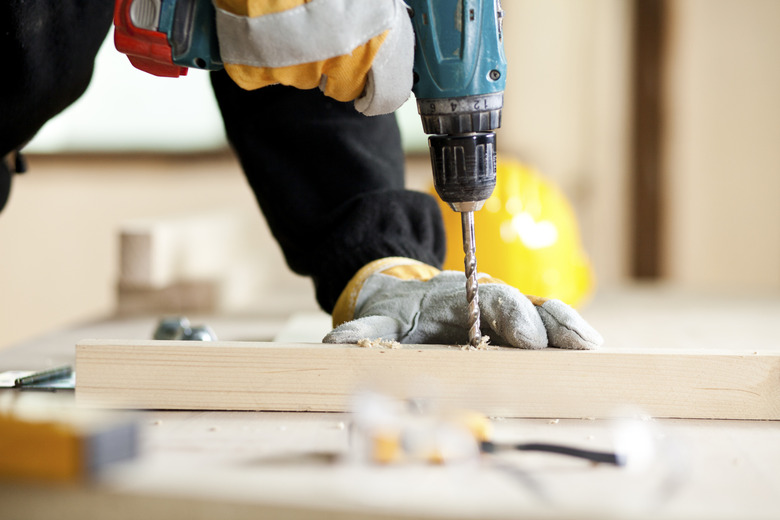Things Made Out Of Tungsten
Tungsten is a steel-gray, heavy metal — chemical symbol "W", atomic number 74, and atomic weight of 183.85. It was isolated in 1783 and originally named wolfram. It's hard and dense, with the highest melting point of any metal (3,422 degrees Centigrade or 6,192 degrees Fahrenheit) and greatest tensile strength of all metals at temperatures above 1,650 degrees Centigrade (3,000 degrees Fahrenheit). These properties are the reasons for most commercial uses of tungsten.
Pure Tungsten
Pure Tungsten
The glowing filament of incandescent light bulbs is made of pure tungsten. Tungsten also is in the starter filament of fluorescent bulbs and filaments of cathode ray tubes. These applications require great tensile strength at very high temperatures. Filament wire represents the single biggest use of tungsten. Pure tungsten also is made into heating elements for electric furnaces used in smelting plants and foundries. Pure tungsten also forms the electron beam target in the vacuum tubes producing X-rays for medical and industrial imaging. The pure metal also is used for lead-free fishing weights, lead-free shotgun pellets, welding rods and in high-tech weighted darts used for sporting competitions.
Tungsten Carbide
Tungsten Carbide
Most things made of tungsten are actually made with tungsten alloys, which are mixtures of tungsten with other metals. For instance, tungsten alloyed with carbon forms incredibly hard tungsten carbide. This material is used in golf clubs, drill bits, grinding burrs, lathe cutting bits, saw blades, cutting wheels, milling bits, wire pulling dies, water-jet cutter nozzles and armor-piercing artillery shells. It's also used for jewelry, mainly rings. Tungsten carbide can take textured finishes or a high-gloss silvery polish. Because tungsten carbide is so hard, the finish resists dings, scratches and abrasion. It's almost as heavy as gold, so tungsten carbide rings have a satisfying "heft" when worn.
Other Tungsten Alloys
Other Tungsten Alloys
Tungsten is alloyed with various combinations of iron, copper, nickel, cobalt and/or molybdenum. The most common metallic tungsten alloys combine 90-95 percent tungsten with nickel and iron. Adding cobalt to the alloy enhances strength and ductility. Replacing the iron with cobalt greatly enhances wear resistance. Replacing the nickel-iron with copper produces a strong, wear-resistant alloy with good electrical conductivity. Adding molybdenum to the nickel-iron mix improves strength but reduces ductility. All metallic tungsten alloys are very dense.
Tungsten Alloy Products
Tungsten Alloy Products
Metallic tungsten alloys are about as effective as lead for blocking radiation, with the advantage of being non-toxic. Tungsten alloys are used to make radiation shields and containers for the radioactive materials used in certain medical imaging devices. Tungsten alloys also are used for balancing weights in computer disk drives and racing cars, inertial dampers for aircraft control surfaces, fragmentation artillery shells, bunker-busting bombs, concrete-piercing bullets and wear-resistant electrical switch contacts in high-voltage equipment.
Cite This Article
MLA
Kirchhoff, Herb. "Things Made Out Of Tungsten" sciencing.com, https://www.sciencing.com/info-8363311-things-made-out-tungsten/. 9 January 2018.
APA
Kirchhoff, Herb. (2018, January 9). Things Made Out Of Tungsten. sciencing.com. Retrieved from https://www.sciencing.com/info-8363311-things-made-out-tungsten/
Chicago
Kirchhoff, Herb. Things Made Out Of Tungsten last modified March 24, 2022. https://www.sciencing.com/info-8363311-things-made-out-tungsten/
